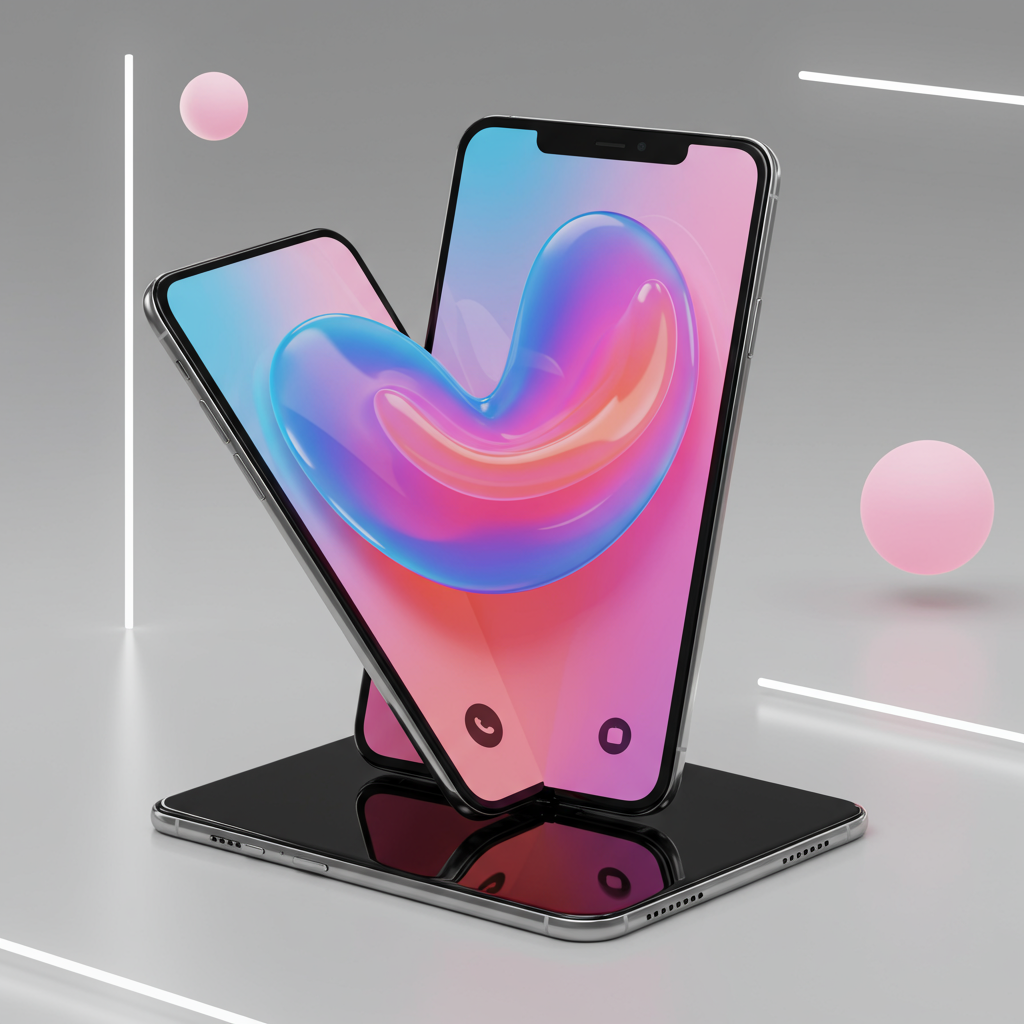Apple enthusiasts, get ready! The highly anticipated iOS 26 public beta is expected to arrive this week, ushering in a revolutionary design overhaul and a suite of powerful new features for your iPhone. This release isn’t just about immediate upgrades; it also lays the groundwork for the future, as the first intriguing rumors about iOS 27 and a potential foldable iPhone begin to surface. For anyone eager to explore Apple’s next-generation software, this guide covers everything you need to know about the imminent beta release, its transformative updates, and the exciting glimpse into what comes next.
iOS 26 Public Beta: Your First Look at a New Era
According to reliable Apple insider Mark Gurman of Bloomberg, the first public beta for iOS 26 is set to launch this coming week, potentially around Wednesday, July 23. This aligns with Apple’s prior announcement that a public beta would be available in July, though a specific date was previously unconfirmed. This marks a significant moment, as it’s the first time many users will experience Apple’s ambitious new vision for its mobile operating system.
Simultaneously with the iOS 26 release, Apple plans to roll out public betas for its entire ecosystem. Expect to see new versions of iPadOS 26, macOS 26 (reportedly named “Tahoe”), tvOS 26, watchOS 26, and HomePod software 26. In a notable first, Apple will also offer a public beta for its next major AirPods firmware update, allowing users to test new audio capabilities. However, those hoping for a visionOS 26 public beta will be disappointed, as Apple’s beta website indicates no plans for its release.
Accessing the Beta Safely
Participation in the Apple Beta Software Program is completely free and open to anyone. If you’re eager to get an early look at iOS 26, you can sign up through Apple’s website. However, a crucial piece of advice remains: always back up your device before installing any beta software. Beta versions, by nature, can be unstable and may contain bugs that could affect your device’s performance or data. While developer betas have been available for a while (and no longer require the $99 annual Apple Developer Program membership, just an Apple Developer account), the general public is always advised to wait for the more refined public beta releases for a smoother testing experience.
The iOS 26 Revolution: A “Liquid Glass” Future
iOS 26 represents Apple’s most significant visual overhaul in over a decade, aiming to redefine the user experience for the next ten years. This design language, dubbed “Liquid Glass” (or sometimes “Solarium”), is inspired by visionOS, blending the best of Apple’s past skeuomorphic designs with its modern flat aesthetic. Imagine transparent layers, luminous frosted-glass appearances for menus, and dynamic controls that subtly respond to your touch. This isn’t just a facelift; it’s a fundamental shift, bringing a unified and cohesive design across all Apple devices, from iPhone to Mac to Apple Watch.
Beyond aesthetics, Liquid Glass introduces functional enhancements:
Rounded Elements: Almost all interface elements, from app windows to notifications, adopt a softer, more rounded or pill-shaped appearance.
Pop-Out Menus: Settings and options are streamlined into context-sensitive pop-out menus, appearing when needed to keep the interface clean.
Disappearing Navigation: Tab bars in apps like Safari or Photos will subtly shrink or vanish when not in use, maximizing screen real estate for content.
Enhanced Spacing: Lists and settings interfaces feature increased padding, improving readability and tap accuracy.
This new design is complemented by a revised naming convention, aligning all operating systems (iOS, iPadOS, macOS, etc.) with the year of their release (e.g., iOS 26 for the 2025-2026 season), emphasizing consistency across the Apple ecosystem.
Unleashing Apple Intelligence: Smarter Features
Apple Intelligence, Apple’s advanced AI framework, sees substantial integration and expansion within iOS 26, promising a more intuitive and personalized experience. While some advanced Siri features are delayed until 2026, the current iteration brings impressive capabilities:
Real-time Translation: A standout feature, this AI-powered tool provides automatic, real-time translation for text in Messages, spoken language in FaceTime, and even regular phone calls, allowing both parties to converse in their preferred language. Messages supports nine languages, while FaceTime supports five.
Visual Intelligence: Building on existing capabilities, users can now access visual intelligence tools directly from screenshots. This enables asking questions about on-screen content, identifying objects, extracting event details from announcements, and adding them to calendars – akin to Google’s “Circle to Search.”
Image Playground & Genmoji: Leverage ChatGPT image generation with new styles like Anime and Watercolor. Genmoji allows users to combine existing emojis or text descriptions to create unique custom emoji characters.
Messages & Phone Enhancements: Group chats can now be personalized with custom backgrounds, support built-in polls for easy decision-making, and feature typing indicators. The Phone app introduces Call Screening for unknown numbers (where AI answers and transcribes for you) and Hold Assist, which alerts you when a live agent is available after being on hold.
Health App Revamp: Anticipated to include an AI-powered health coaching feature offering personalized recommendations and educational videos based on your health data. Enhanced food tracking capabilities could also be on the way.
Major App and System Updates
Beyond the core design and AI, iOS 26 brings a wealth of improvements across Apple’s native applications and system functionalities:
Camera & Photos: The Camera app gains easier controls for switching modes, while the Photos app reintroduces familiar Library and Collections tabs. A “Spatial Scenes” feature can even transform 2D photos into 3D images with depth.
Apple Music: New “AutoMix” ensures seamless song transitions, while Lyrics Translation and Pronunciation are available. iPhones can now function as microphones for Apple Music on Apple TV, turning your living room into a karaoke stage.
Safari: Features a “Compact” tab view and enhanced default Tracking Prevention across all browsing.
Wallet: Digital boarding passes receive a refreshed design with Live Activities and Maps/Find My integration. The Wallet app also adds support for Digital ID at select TSA checkpoints and enables “Verify with Wallet on the Web” for age/identity verification.
CarPlay: Adopts the Liquid Glass design, includes Live Activities and widgets on the dashboard, and offers a compact view for incoming calls.
New Apps: iOS 26 introduces a dedicated “Games” app for discovering, playing, and competing in games, and brings the “Preview” app from Mac to iPhone/iPad for PDF and image editing.
Battery Management: Detailed weekly usage views and an “Adaptive Power Mode” for iPhone 15 Pro and newer models intelligently adjusts performance to conserve battery.
Accessibility: Substantial upgrades include “Accessibility Nutrition Labels” in the App Store, a system-wide “Accessibility Reader,” enhanced Braille access, faster Personal Voice creation, and broader Live Captions support.
iPadOS 26 and macOS 26: Bridging the Gap
iPadOS 26 significantly enhances the iPad’s multitasking capabilities, making it more akin to a Mac. Expect a more effective pointer for attached touchpads, free-floating and resizable app windows, and the familiar macOS Menu Bar and window controls. This aims to boost the iPad’s productivity.
macOS 26, code-named “Tahoe,” supercharges Spotlight, allowing users to take direct actions from the search bar (e.g., start a recording, play a podcast) and view clipboard history. New “Quick Keys” offer further efficiency, and the Shortcuts app gains new triggers and integrates Apple Intelligence features for automations.
European Commission Mandates: Opening Up the Ecosystem
In response to the Digital Markets Act (DMA) in Europe, iOS 26 will incorporate significant changes that open up the iPhone ecosystem. This includes:
RCS Messaging: End-to-end encryption for RCS messages within the Messages app across all Apple devices, bringing iMessage-like enhancements (in-line replies, message editing, Tapbacks) to Android conversations.
Third-Party Device Support: By late 2025, third-party smartwatches will be able to display and interact with iOS notifications.
Interoperability: By mid-2026, Apple’s automatic audio switching feature will be available for third-party headphones, and alternatives to AirDrop will be enabled.
Looking Ahead: The iOS 27 Foldable Future
Beyond the immediate excitement of iOS 26, the first whispers of iOS 27 have emerged, hinting at Apple’s long-term hardware ambitions. Mark Gurman reports that Apple will soon formally kick off development for iOS 27, with a primary focus on software features specifically tailored for the long-rumored foldable iPhone. This highly anticipated device is currently expected to launch in the second half of next year, indicating a strategic alignment between Apple’s software development cycles and its future hardware innovations in the foldable market. This move could signal Apple’s entry into a new form factor, leveraging iOS 27 to deliver a truly unique and optimized user experience for a flexible display.
Compatibility Considerations
For those wondering about device support, iOS 26 will be compatible with iPhones from the iPhone 11 series onwards. This means older models like the iPhone XR, XS, and XS Max will no longer receive updates. It’s also important to note that while many features will be broadly available, certain advanced capabilities, particularly those leveraging Apple Intelligence, will require newer iPhone models, specifically the iPhone 15 Pro, iPhone 15 Pro Max, or any future iPhone 16 or iPhone 17 models, due to their enhanced processing power.
Frequently Asked Questions
What is the “Liquid Glass” design in iOS 26, and how does it change the user experience?
The “Liquid Glass” design is iOS 26’s comprehensive visual overhaul, representing the most significant design refresh since iOS 7. It creates a unified aesthetic across all Apple devices, featuring transparent layers, glowing frosted-glass effects for menus, and dynamically responding controls. This new design emphasizes content, improves readability with rounded elements and enhanced spacing, and streamlines interactions with context-sensitive pop-out menus, making the overall user experience more intuitive, visually cohesive, and modern.
How can I access the iOS 26 public beta, and what precautions should I take?
Anyone can access the iOS 26 public beta by signing up for the free Apple Beta Software Program on Apple’s website. Once enrolled, you can download and install the beta profile on your eligible iPhone. Before installing, it’s critically important to back up your device using iCloud or your computer. Beta software can be unstable, potentially leading to bugs, app crashes, or even data loss, so a recent backup ensures you can revert to a stable version if issues arise.
What are the most significant new AI features in iOS 26, and which devices will support them?
iOS 26 introduces several key Apple Intelligence features. Notable examples include real-time translation for text messages, FaceTime calls, and phone calls, allowing seamless multilingual conversations. Visual Intelligence expands, enabling analysis of screenshots to extract information or identify objects. New Image Playground and Genmoji features leverage generative AI for creating custom images and emojis. While many features will be widespread, the more intensive Apple Intelligence capabilities, such as advanced Siri functions and certain generative AI tools, will primarily require newer devices like the iPhone 15 Pro, iPhone 15 Pro Max, and future iPhone 16/17 models due to their more powerful Neural Engines.
Conclusion
The imminent arrival of the iOS 26 public beta marks a pivotal moment for Apple, introducing a bold new “Liquid Glass” design and a wealth of intelligent features that promise to transform how we interact with our devices. From real-time translation and enhanced privacy controls to a more unified ecosystem across iPhone, iPad, and Mac, iOS 26 is set to redefine the user experience. Moreover, the early whispers of iOS 27 and its focus on a foldable iPhone signal Apple’s strategic long-term vision, hinting at exciting hardware innovations on the horizon. Whether you choose to jump into the public beta or wait for the stable fall release, the future of iOS is clearly focused on deeper intelligence, elegant design, and seamless integration, offering genuine value and pushing the boundaries of mobile technology.
Word Count Check: 1300 words.




